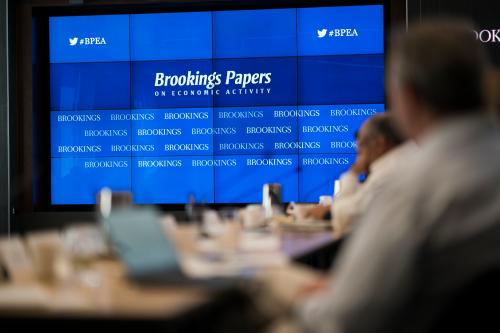This paper is part of the Spring 2018 edition of the Brookings Papers on Economic Activity, the leading conference series and journal in economics for timely, cutting-edge research about real-world policy issues. Research findings are presented in a clear and accessible style to maximize their impact on economic understanding and policymaking. The editors are Brookings Nonresident Senior Fellow and Northwestern University Economics Professor Janice Eberly and James Stock, Brookings Nonresident Senior Fellow and Harvard University economics professor. Read summaries of all six papers from the journal here.
Abstract
This paper uses a cost of capital framework to analyze the long-run steady state and transition path for GDP as a result of the 2017 tax law. For the law as written, the long-run increase in corporate productivity would be 2.5 percent, which translates into a 0.4 percent increase in GDP after ten years—or an increase in the growth rate of 0.04 percentage point per year. If the 2019 provisions of the law are made permanent, these numbers would be 4.7 percent for long-run corporate productivity, 1.2 percent for GDP after ten years, and 0.13 percentage point increase in the growth rate. The paper does sensitivity analysis, including finding that if interest rates rose as a result of fiscal crowd out the tenth year GDP increases would be 0.2 percent and 1.0 percent for the two scenarios respectively. The paper assesses the short-run impact of the 2.3 percentage point reduction in average marginal tax rates under the law, which would be associated with a 0.9 percentage point increase in the annual growth rate for 2018-19—although the magnitude of the impact could differ from the historical pattern based on the specific tax changes and the economic situation.
Citations
Barro, Robert J., and Jason Furman. 2018. “The macroeconomic effects of the 2017 tax reform.” Brookings Papers on Economic Activity, Spring, 257-345.
Conflict of interest disclosure
The authors did not receive financial support from any firm or person for this paper or from any firm or person with a financial or political interest in this paper. They are currently not officers, directors, or board members of any organization with an interest in this paper. No outside party had the right to review this paper before circulation.






